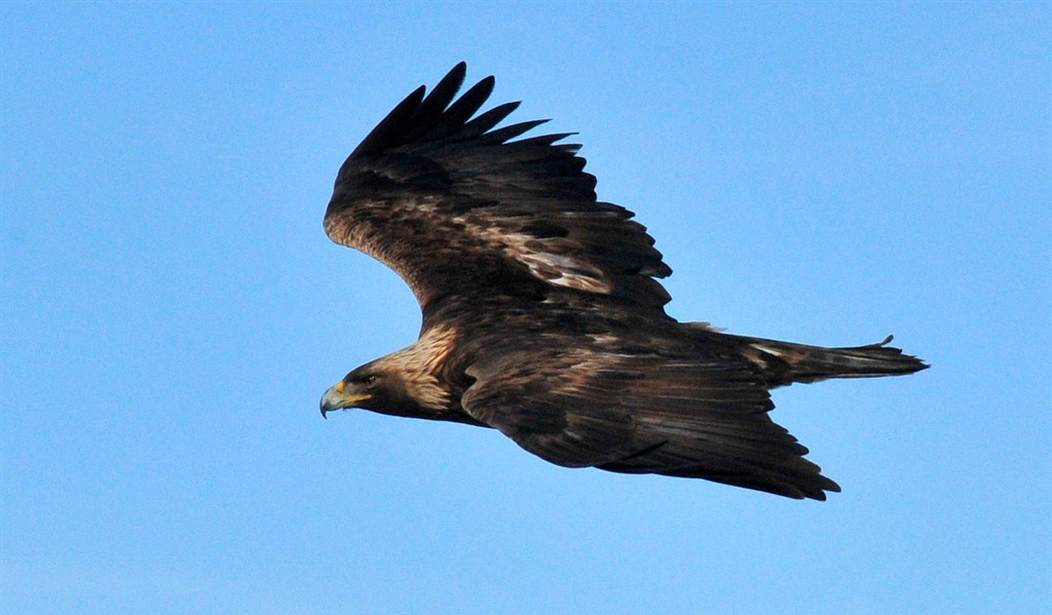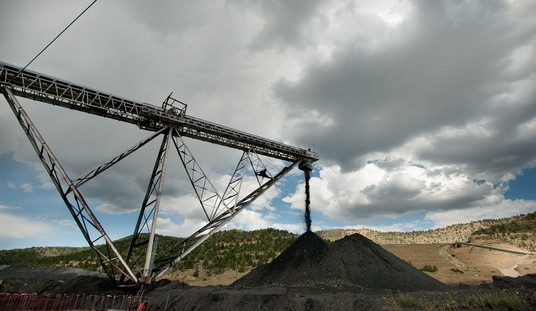Since wind farms became part of the landscape, it’s become obvious that wind energy may save the planet from climate change but birds are going to suffer the consequences. Up to a million birds a year are killed after zigging when they should have zagged near a wind farm. And that tally is expected to explode with the new climate bill throwing billions of dollars at the wind turbine industry.
Wind farms are located in areas that experience steady winds. Just by coincidence, these areas are also home to birds that use the wind to hunt by soaring over vast distances looking for food.
Of particular interest are declining golden eagle populations; the raptors’ habitat is now ground zero for wind farm expansion. Golden eagles are teetering on the edge of being declared an endangered species unless some way can be found to protect them.
Federal officials have tried to curb turbine deaths, while avoiding any slowdown in the growth of wind power as an alternative to carbon-emitting fossil fuels — a key piece of President Joe Biden’s climate agenda.
In April, a Florida-based power company pleaded guilty in federal court in Wyoming to criminal violations of wildlife protection laws after its wind turbines killed more than 100 golden eagles in eight states. It was the third conviction of a major wind company for killing eagles in a decade.
Despite the deaths, scientists like Bedrosian say more turbines are needed to fight climate change. He and colleague Charles Preston are finding ways wind companies can reduce or offset eagle deaths, such as building in areas less frequented by the birds, improving habitat elsewhere or retrofitting power poles to make them less perilous when eagles land.
But what the scientists can’t do is reduce the amount of land needed to generate electricity on an industrial scale using wind or solar power. A nuclear plant like Diablo Canyon in California sits on about 1.3 square miles of land. To generate a comparable amount of electricity using wind power would require 500 square miles of land.
It would help scientists if federal officials would reveal the number of golden eagles killed by wind farms. But strangely, that information has been tagged “sensitive law enforcement” information. One company, NextEra Energy, one of the largest U.S. renewable energy providers, pleaded guilty to three counts of violating the Migratory Bird Treaty Act and was ordered to pay more than $8 million in fines. About 150 golden eagles in eight states became “victims.”
Related: Take a Look Inside a Cricket Farm…Which Is Where Your Food Will Come From Soon
But should we really criminalize accidents that kill birds who don’t have the intelligence to avoid wind turbines?
Prosecutors said the company’s failure to take steps to protect eagles or to obtain permits to kill the birds gave it an advantage over competitors that did take such steps — even as NextEra and affiliates received hundreds of millions of dollars in federal tax credits for wind power.
The company remained defiant after the plea deal: NextEra President Rebecca Kujawa said bird collisions with turbines were unavoidable accidents that should not be criminalized.
Utilities Duke Energy and PacifiCorp previously pleaded guilty to similar charges in Wyoming. North Carolina-based Duke Energy was sentenced in 2013 to $1 million in fines and restitution and five years probation following deaths of 14 golden eagles and 149 other birds at two of the company’s wind projects.
The Greens feel very, very bad about the bird deaths. But it’s a small price to pay to save the planet, right?










Join the conversation as a VIP Member